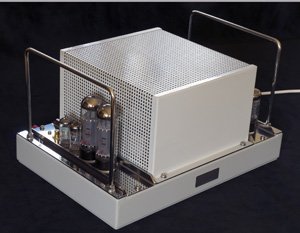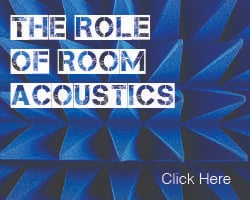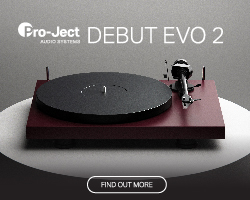As the Radford Revival STA15 is a reissue of an early 1960s design, we thought that the best way to give readers a full and clear picture of what this amplifier is capable of was to conduct two separate reviews.
In his first review of the Radford Revival reissue, Paul reviews the amplifier as he would any other modern amplifier, with the caveat that some, but not all of the music chosen was contemporary with the design of the amplifier.
The second forthcoming review will compare and contrast an original STA15 against the Radford Revival STA15 Series 3 Re-Issue. – Stuart
Background
Radford Electronics was originally set up in Bristol by Arthur Radford in 1959 and it was the later Series 3 amplifiers such as the STA15 and STA25 that established Radford’s designs. These were unique amplifiers for the day, and in some ways remain so even today due to Radford’s interest in the amplifier’s ‘rise time’ and square wave response, carefully designed and engineered to ensure possibly the highest fidelity for home audio reproduction to date when first released back in the early 1960s. Without going into too much detail (the technical specifications are available to view on Radford Revival’s website) it’s the square wave response and very low distortion (and here I mean very low for a valve amplifier; almost into SS territory in fact) which really set these amplifiers apart from the rest of the 1960s contemporary crowd.
The difference between the 15 and the 25 models is mainly in the power supply and output valve bias arrangements. The STA 15, high tension power supply rectification is provided by a GZ34 rectifier, providing around 380V high tension. Output valves on the STA15 use automatic biasing courtesy of cathode resistors whilst the STA25 output stage is fixed bias with a negative grid voltage applied to the output valve, adjusted for the output valve.
First Impressions
It was with a little trepidation that I took delivery of the very first STA15 to be produced since the last of the original Radford Series 3 amplifiers were built in the 1960s. The amplifier is a very iconic design with its twin lifting handles and large vented transformer casing. If the looks are iconic, so is the appeal and quality of sound in valve enthusiast circles where the STA25 in particular is held in considerable esteem.
What immediately struck me was the quality of finish compared with the original STA15 – there seem to be a few light touches to improve on the original here and there. Sure enough, after speaking with Steve from Radford Revival he confirmed that the chassis casing has been made slightly thicker to avoid the buckling issues that the original suffered from. The under-plate fixings have also been improved and there’s less flex in the lifting handles, which remain to the same elegant dimensions as the original.
Paintwork standards and metalwork finish are excellent and what you’d expect from an amplifier in this price range. Round the back, the amplifier is virtually indistinguishable from the original, sharing the same layout and switches/sockets. On the review sample, the speaker binding posts weren’t the best quality, but I am told that higher quality binding posts will be used on the production models; this model being readied for review had used the posts to hand at the time. Another change Radford Revival eventually plan is the inclusion of a new IEC socket to allow use of your own mains leads (the review sample and first production models having a captive lead).
The JJE34L (a slightly upgraded valve with 30W plate dissipation) output valves have been specifically chosen due to their measured response which Steve assures me is perfect for the amplifier although different valves can be specified to special order.
After connecting all the cables and firing up the preamp and the Radford, I allowed things to settle in before the first audition. In fact, the amplifier was allowed a total bedding in time (on and off) of around 30 hours.
Sound Quality
Having extensive experience of Leak and Quad vintage amplifiers using the slightly different EL34 output valves, I have to admit to having some preconceptions on their sound – a slightly coloured and lush mid-band and soft bass, but those preconceptions were rather unjustified considering the major differences in circuit design used in the STA15. For a start, a lot of negative feedback (filtered) through the transformer is used to guarantee vanishingly low distortion levels and a claimed frequency response of 20 Hz to 20KHz (with very little roll off at the extremes) was stated. Before I spun up the first album, I turned up the preamplifier to gauge circuit noise. It came as quite a surprise to hear that there was very little. In fact, at normal listening levels there was no hissing evident through the 100dB/1w ‘speakers which was quite remarkable and the slight hiss that did start to appear above these levels was mainly down to the preamplifier. One thing that was apparent close up (within a few metres) was some noise from the transformer, a slight buzz being evident. Whilst audible, it wasn’t that intrusive and at the listening position some 4m away it could hardly be heard at all.
I decided to break the amp in gently, not wanting to throw in too many demanding pieces so that I could get an initial impression of the sonic signature of the STA15. It’s worth mentioning at this point that the review loudspeakers are both a very valve amp friendly load, plus utterly revealing of partnering equipment and recording. Garbage in = garbage out and any characteristics of the recorded material or amplification would shine through.
Some of the review music was purposely chosen to be in keeping with the era of the amplifier, being recorded in the 1960’s or re-releases of 1960’s albums, whilst others were more contemporary. This was going to be interesting!
First up was a superb album of Maria Callas’ unreleased recordings on an immaculate EMI pressing. Background noise was stunningly low from the off, almost CDP territory. Tracks were from Verdi and Bellini. I know that from auditioning many quality amplifiers that the voice on these pieces should be rich, full and well projected without any hint of glare. Almost immediately some brass from one of the Verdi pieces belted into the listening room with startling realism, almost jaw droppingly so. Callas’ voice was portrayed with great neutrality and had her characteristic signature but as the tempo rose, so did a slight amount of upper mid/lower HF harshness; not much, and certainly not enough to spoil the piece, but evident nonetheless. The orchestra was tonally correct and the music was presented in the sort of instrumental layers that allowed instruments to be clearly picked out and with fairly good layering front to back.
Listening to a few more tracks I was impressed, for such a modest output, at just what volume this little amp could throw out. The preamp never had to rise above one quarter to achieve very high sound levels and large transient swings. The amp didn’t have it all its own way though. Was it my imagination or was there a slight muddiness in the bass? I decided to swap recordings to something I know has very deep but controlled and articulate bass in the recording, so off came Callas and on went John Lee Hooker’s “The Healer” which has some great bass guitar work underpinning many of the tracks.
“In the Mood” And “Cutting Out” are amongst my favourite tracks on this album and I know with my Lumley ST40s hooked up the bass is authorative, yet controlled and very coherent; ditto with my other amplifier the Primare i30. Once again, as the tracks cued there was a lack of background noise and some very clean and well projected vocals, but enter the deep strumming of the bass guitar and things started to come apart a little. The bass is there but it somehow sounds a little muddled again. It’s well controlled with notes starting and stopping as they should, but there was a slight veil over the notes which weren’t as taught or clean as they should have sounded. I could forgive that though, as the main rhythm section and vocals were crystal clear and articulate with the nuance and detail present and correct. Cymbals were nicely handled too with evident decay and realism.
Right, onto Radiohead’s OK Computer on 180g vinyl. This is a particularly superbly mastered and recorded album and one I’m particularly fond of for its production values. Once again, launching into a few of the tracks, the music is presented with great mid presence and the treble in particular seems nicely detailed. The specifications for low distortion are certainly backed up by listening here, as with an increase in volume to ear splitting levels, the music doesn’t harden up or become brittle, it simply gets louder. Once again, the bass was starting to irritate a little. There didn’t seem to be enough snap to the drums and low bass notes, whilst evidently present, it didn’t have the detail I was expecting, almost as if the notes were being slightly smeared. In keeping with the findings on the first album, there was also some upper-mid glassiness to the lead vocals, which started to intrude slightly. Not greatly so, but vocals were a little more strident and thinner sounding than they ought to have been.
Following these three initial albums, I decided to give the amp some more extended running time in case some of that upper glare could have been explained by the valves needing a little more running in time.
Once the amp had a dozen or so more running hours under its belt, I decided to throw my “system killer” album at it. The sheer dynamic scale combined with full (and very large) orchestra plus several massed choirs is enough to bring many systems blubbering to their knees. I’m referring here to Boito’s Mefistofele on the Decca Label, and in particular to the acclaimed 1983 digital recording (Ghiarov, Pavarotti, Freni, Caballe) with the National Philharmonic Orchestra conducted by De Fabritiis.
The introductory passage was handled very well, with (once again) a notable realism to brass and quite a pleasing sound to strings (no strident steeliness). As things began to move in the first act, the choir was pleasingly portrayed with surprising accuracy. Even as the crescendo of orchestra and choir started to build, the imaging stayed accurate and I could still pick out individual voices and their placements quite clearly. Higher up the closing crescendo things started to get a tiny bit muddled but in fairness, this has been true on many quality amplifiers tested and the thing that pleased with the STA15 was how well it managed the transients and how good that orchestra sounded, particularly the brass. Once again though, as the piece continued, it was evident as with the other recordings that the bass lacked detail and outright extension and was clearly a little muddled. There were instances where the bass coherence started to give way to boominess, so the volume was turned down to a lower level which helped a little. As with Callas’ voice, on this recording Caballe’s voice was great in the lower registers but took on a slight glare that started to intrude when the frequency started to rise.
Switching from Classical to some close mic’d jazz and acoustic work presented a better picture. Pieces from Eva Cassedy’s “Songbird” to John Coltrane’s “Ultimate Blue Train” started playing to the amplifier’s strengths. Here, the amplifier exhibited great detail with an articulate and pleasant mid band, fabulous timing and great imaging accuracy.
Conclusion
The STA15 majors in low distortion and accuracy and considering that we’re NOT talking about a brand new amplifier design, but an exact copy of the original 1960’s amp, that makes it all the more remarkable. I know that Steve and William have gone to great lengths to source a top quality transformer (wound to the exact specs as the original but with improved materials and insulation) and it shows. Brass instruments are conveyed with particular realism, and for acoustic work, the amplifier’s a stunner. Mid range does not have that often stereotyped soft lushness commonly associated with EL34 driven amplifiers of this era but is remarkably neutral. Transients are lightning quick and output and control for such a modest valve amp are also noteworthy. The caveat though is that as with any similar valve amplifier, you’d have to match the loudspeakers very carefully. I’d say that you’d need ‘speakers with a relatively high sensitivity of 88dB or higher and a benign impedance loading. The amp does cater for 4 Ohm, 8Ohm or 16 Ohm loads via switchable transformer taps on the rear of the casing. Weaknesses are evident though, and as much as I wanted this amplifier to be all things to all people, it is evidently not that. If you want an amp for loud rock or thunderous bass, look elsewhere. There’s also a slight edge to the upper mids which may require partnering with slightly warmer than neutral sounding sources, although upper treble has detail and sparkle without being dominant.
What Steve and William set out to do was to reproduce the original, faithful in every way, and here they have not only succeeded, but improved on the original too. Not by any changes to design (as it’s an identical circuit) but in the attention to detail and in some of the subtle improvements. This isn’t a supercharged version of the original STA15, but I’d argue that it is a better quality version, using up to date high quality components and housed in a chassis that is a little more robust although indistinguishable visually from the original. Should people hankering after an STA15 buy an original and restore it, or one of these “Revival Units”? My money’s on the Revival unit, but it will be interesting to compare it against a fully serviced version of the original…keep watching this space!
Weight: Approx 17Kg
Size (WxDxH): 36x25x22cm
Supported AC voltages: 110, 125, 140, 220, 235, 250
AC frequency: 50-60hz
Impedance settings: 4Ω, 8Ω, 16Ω
Speaker connection: Standard 4mm binding posts
Rise time: 5μS
Input sensitivity: 500mV
input impedance: 100kΩ
Output impedance (8Ω configuration selected): Approx 0.3Ω
Supplied valves: JJ GZ34, JJ E34L, Phillips Mil Spec 6U8 / ECF82, Winged-C Russian EF86 / 6J32P
Power (1% THD): 20W
Power (0.1% THD): 15W
Bandwidth (-1dB):
1W: 20Hz – 60Khz
15W: 20Hz – 40Khz
20W: 25Hz – 25Khz
Author – Paul
Manufacturer: Radford Revival
Manufacturer’s Retail Price: £2750
Review System: EAR834P Signature Phono Preamplifier, Michell Gyro SE with SME309 Magnesium arm and Shelter 5000 MC cartridge. Horning Agathon Ultimate Loudspeakers.
Want to read more hifi reviews?














































































































































































































good un biased review. I’ve had an STA 3amp,pre-amp & transistorised tuner from new (1966). Keeps the house warm,bit springy on the base in comparison with the Naimset up I have now.Would not part with it,still looks good and as you say,excellent quality, finish and construction ,drives a pair of transmission line speakers, and the 401 still rumbles on.